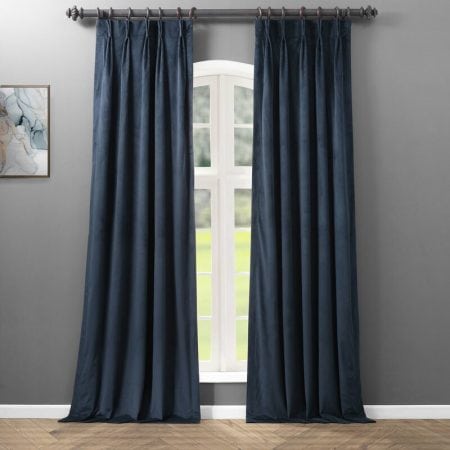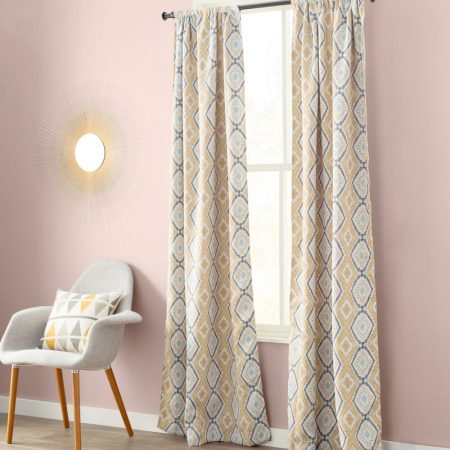Should Curtains Touch The Floor?
If you’re ordering new curtains for a room, you’re probably wondering what length to get. Because, after all, the length of your curtains can play a drastic role in the design of your room.
In most cases, your curtains should lightly touch the floor. There are some exceptions, though, especially if your curtains are for a short window or become a fire hazard if too long.
Here’s what you should know.
Do Curtains Need To Touch the Floor?
For an on-trend and pulled-together look, your curtains should graze the floor. However, you can ignore this rule if you’re hanging curtains on a small kitchen window, behind furniture, or hanging drapes over a radiator or baseboard heater.
If you need to hang curtains by a baseboard heater, there should be at least 8 inches of space between the bottom of the fabric and the top of the heater.
How to Hang Your Curtains – Different Styles
While it’s true that having your curtains touch the floor is best in most cases, there are variations to this rule.
And what you choose should ultimately depend on your personal preferences. Here are examples of the best way to hang curtains.
Kissing/Grazing
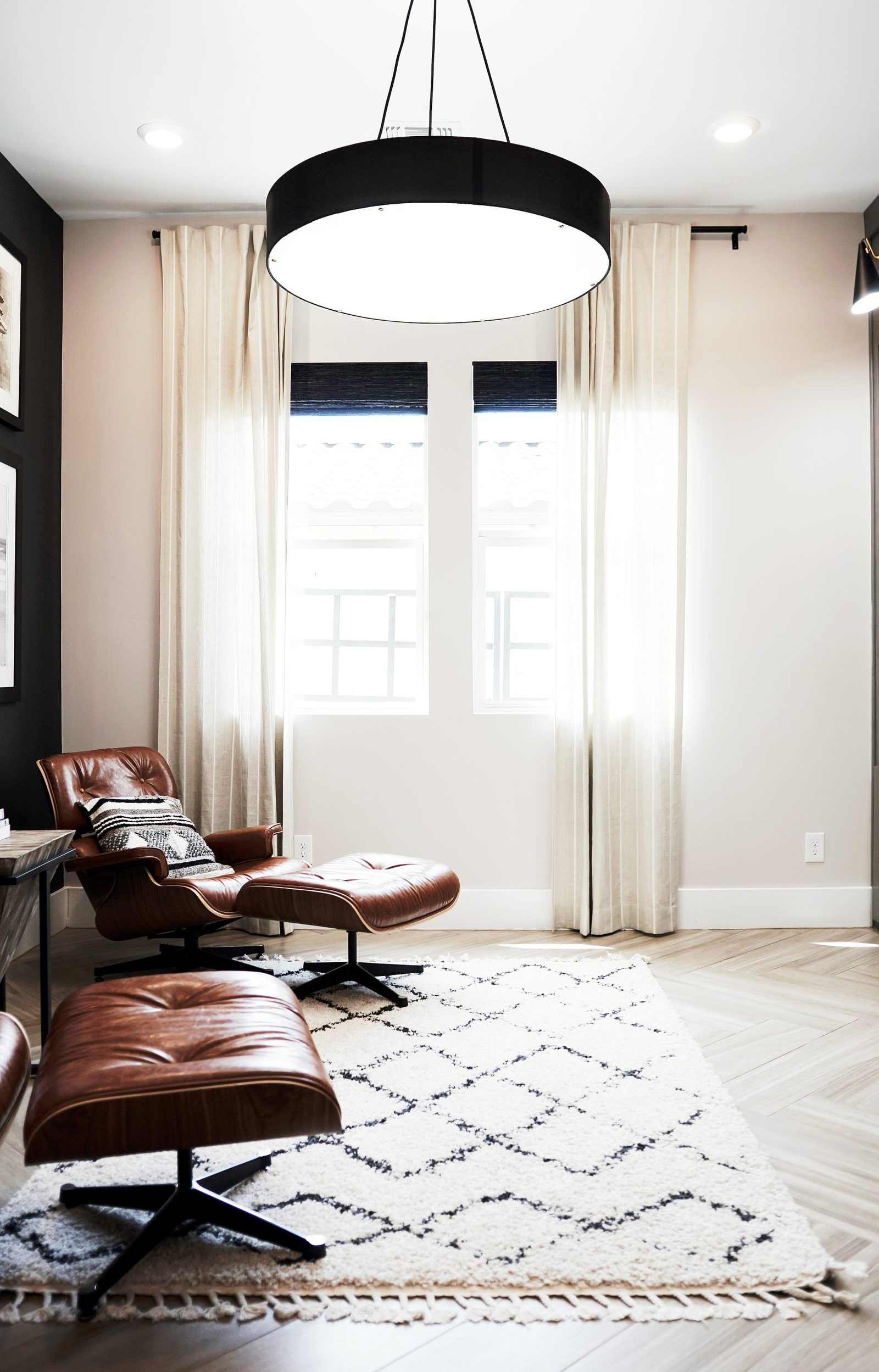
When curtains graze or kiss, they barely touch the floor – they don’t puddle or expose the baseboards. This is one of the most sought-after curtain lengths.
However, the kissing length is also one of the hardest to achieve since you need to be accurate in your measurements.
To get this look, position your curtain rod at a precise height or have your curtains hemmed.
Puddling

Puddling is when you have at least 6 inches of extra fabric that piles on the floor, creating a “puddle.”
Puddling is an excellent choice for formal, romantic, or traditional-style rooms. Puddling looks best with thick curtains that are a luxe fabric like velvet.
Of course, there are some downsides to having a pile of fabric on the floor. If you choose this style, you’ll need to wash your curtains more often and move them out of the way each time you sweep and mop.
Breaking
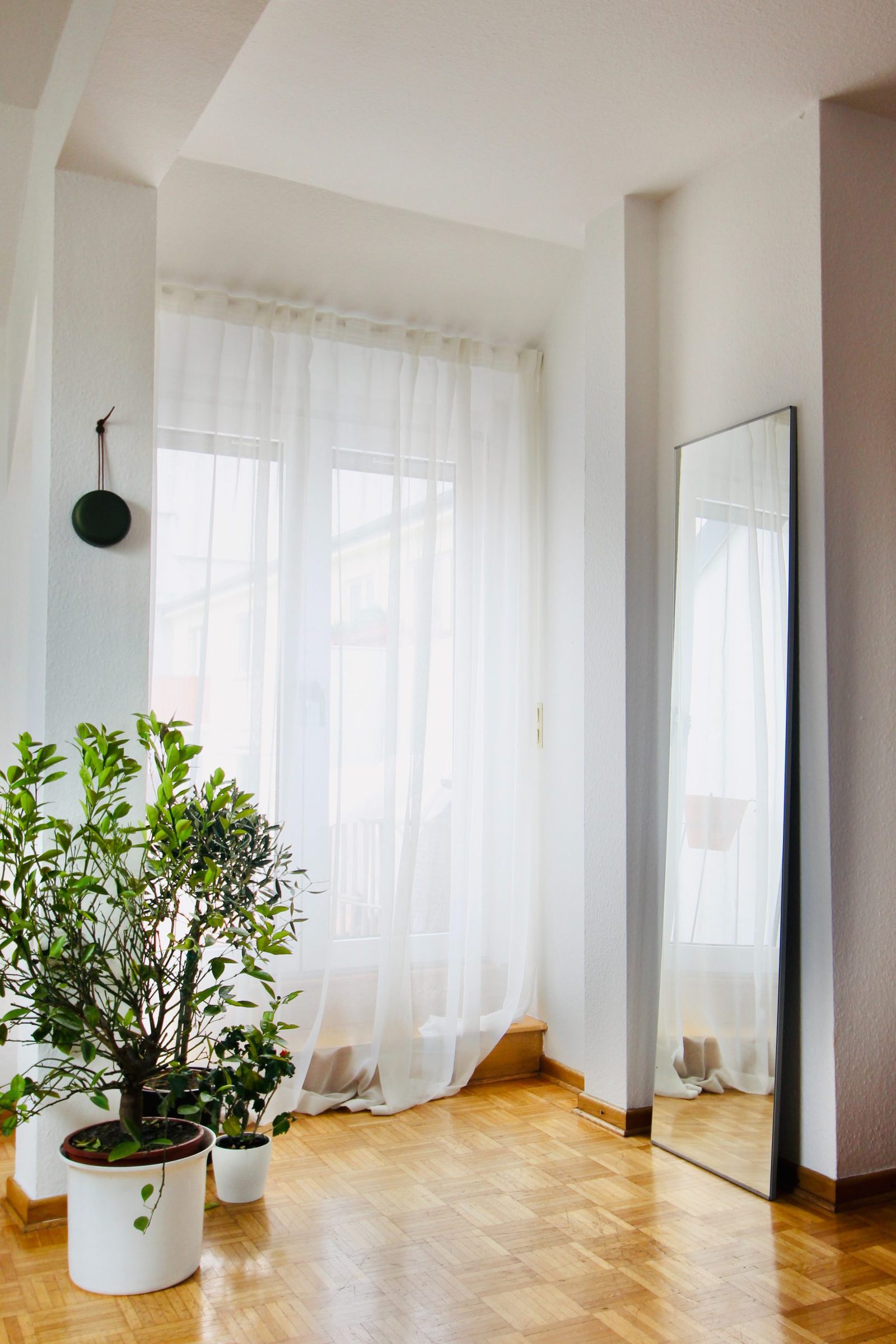
Breaking is a nice balance between puddling and kissing. Your curtains will extend a couple of inches onto the floor for this style, creating a “break.”
Breaking is a very casual look and works well for many styles and types of the curtain material.
But since breaking means your curtains touch the floor, they will need to be washed more.
Floating
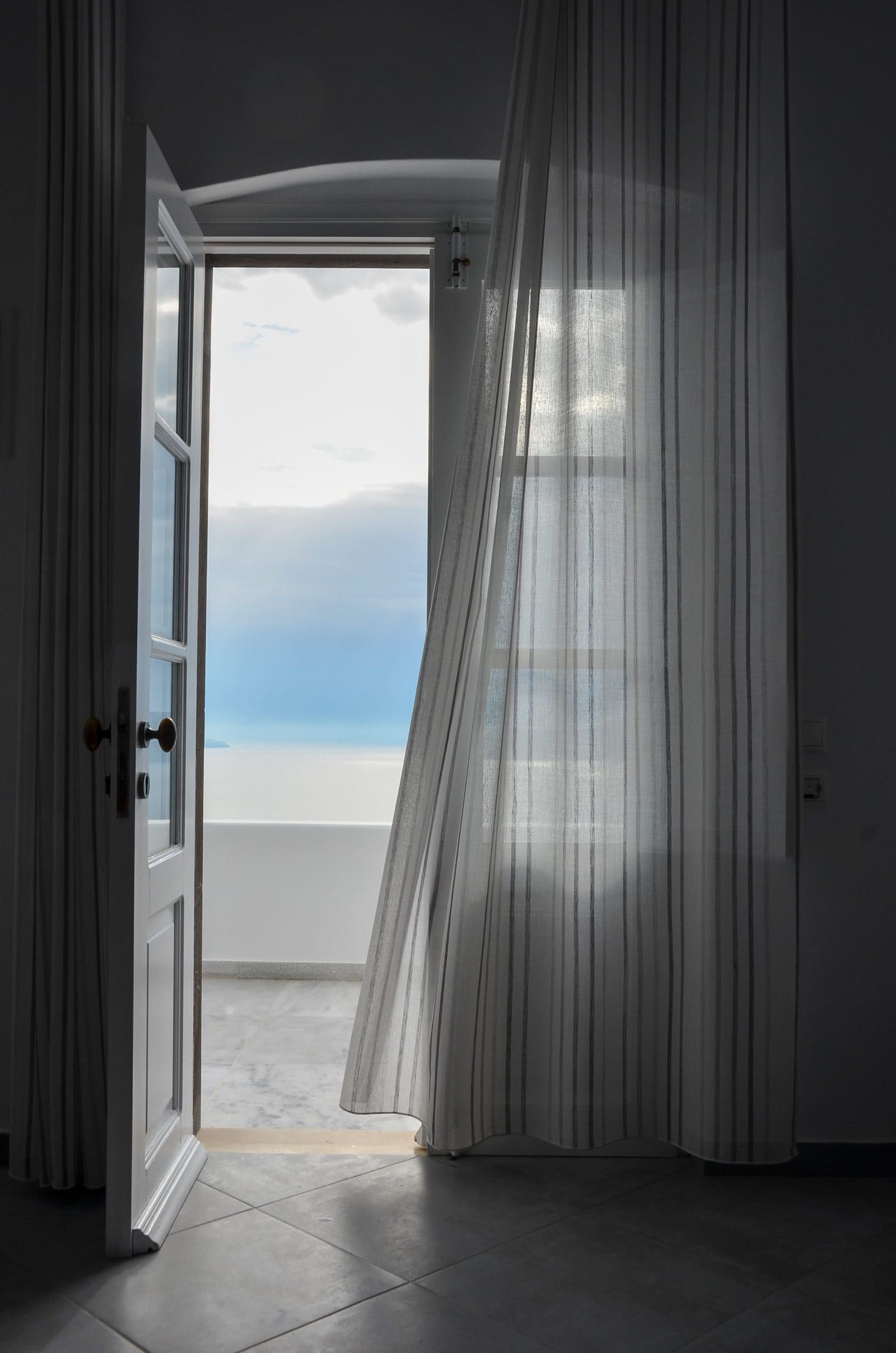
Consider floating if you’re looking for a curtain length that’s easy to maintain and still looks good. For this look, you’ll want the curtain fabric to hang about half an inch above the floor.
This length allows for easy vacuuming, and you don’t have to worry about your curtain collecting excess dust.
Short Curtains
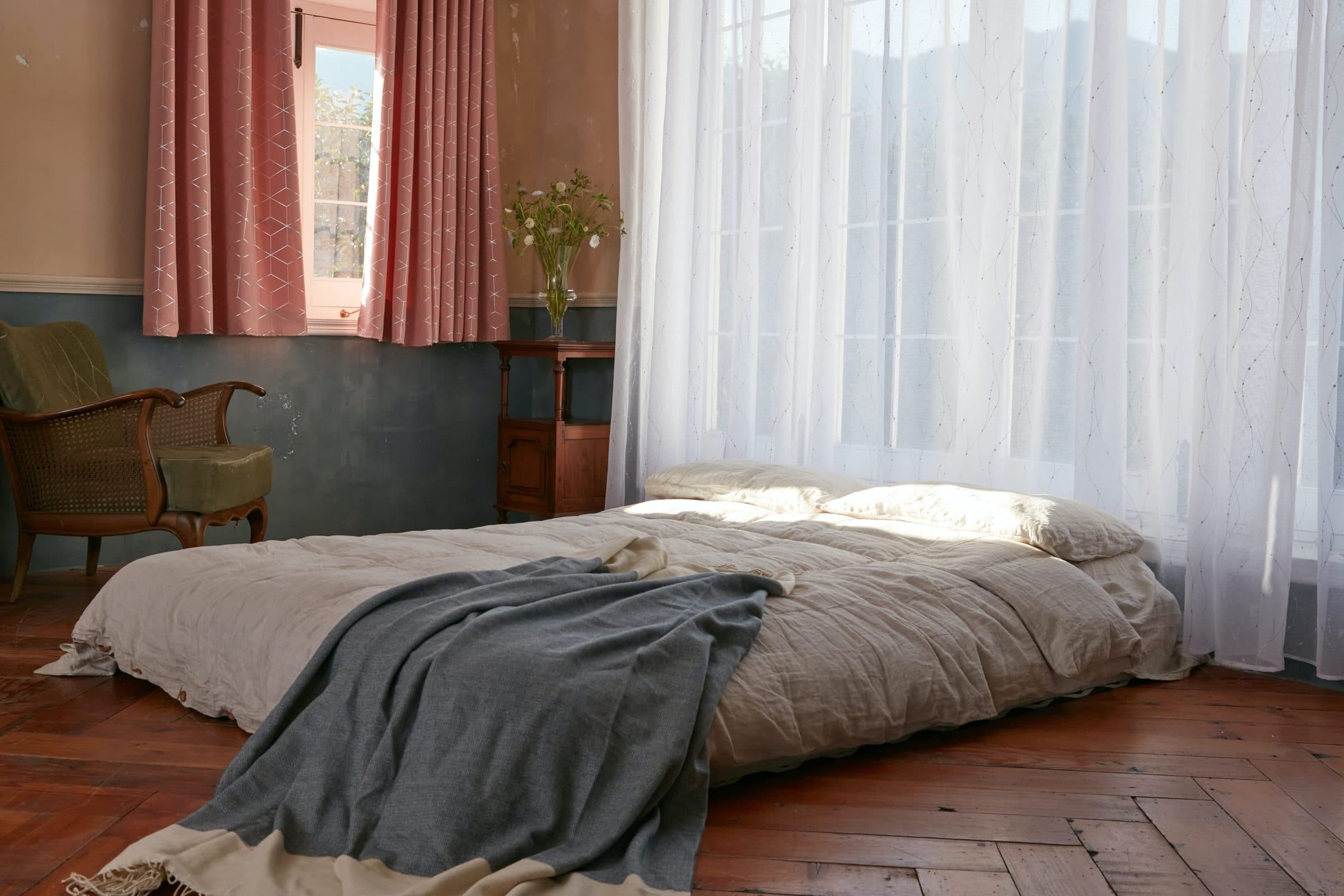
There are some circumstances where long curtains don’t make sense – in kitchens, bathrooms, above seating, and over baseboards, to name a few.
In this case, short curtains are the answer.
Your short curtains should hit the bottom of the windowsill or go slightly past it. This allows for a cute and breezy look.
Cafe Curtains

You often see cafe curtains in cafes, hence the name.
These drapes hit the bottom of the windowsill like short curtains do but extend only halfway up. If you want more privacy, you can add a valance or second panel on top, depending on the size of your window.
Cafe curtains are an excellent option for small kitchen and bathroom windows.
How to Measure for Curtains
If you’re ready for curtains, you need to know the curtain drop you’d like. The drop is the measurement from the top of your curtain rod to the curtain’s hem.
The standard curtain drops you’ll find premade include 54, 72, 90, and 108 inches.
To decide which curtain length you need, determine what style you’d like to go for.
Remember, curtains that “kiss” will gently touch the floor, while more dramatic techniques like puddling will require an extra 6 inches of fabric.
Once you know the style, decide where you will place your curtain rod. To make your walls look taller, put the rod at least a couple of inches above the top of the window. For a more dramatic look, you can place your curtain rod at the top of the wall, near the ceiling.
Once you know where you’ll be placing your curtain rod, use a tape measure to determine how long your curtains need to be to achieve the look you like.
If you can’t find any premade curtains the length you need, you can have them hemmed or have custom curtains created.
Should Your Curtains Be Longer than the Window?
Yes, your curtains should be longer than the window. Even if you prefer the short style of curtains, they should hit the bottom of the windowsill or extend an inch or so below it.
The only exception is if you’re using cafe curtains. Since you place these halfway down on the window, they will not be longer than the window itself.
How Far Should Curtains Be off the Floor?
Believe it or not, your curtains don’t have to be off the floor – it all depends on what style you’re going for. The most in-favor way to hang curtains is the kiss or graze method. You’ll want your curtains to barely touch or “kiss” the floor for this style.
However, you can also hang curtains ½ inch from the floor for the floating look or let them puddle for a more traditional style.
Final Thoughts
If you’re wondering if your curtains should touch the floor, it depends on what style you like best. The biggest mistake to avoid is hanging your curtains, so they hit between the windowsill and baseboard.
Try going long, where your curtains touch the floor, or commit to a short look where your curtains touch the bottom of the windowsill. Stay away from the middle lengths.


